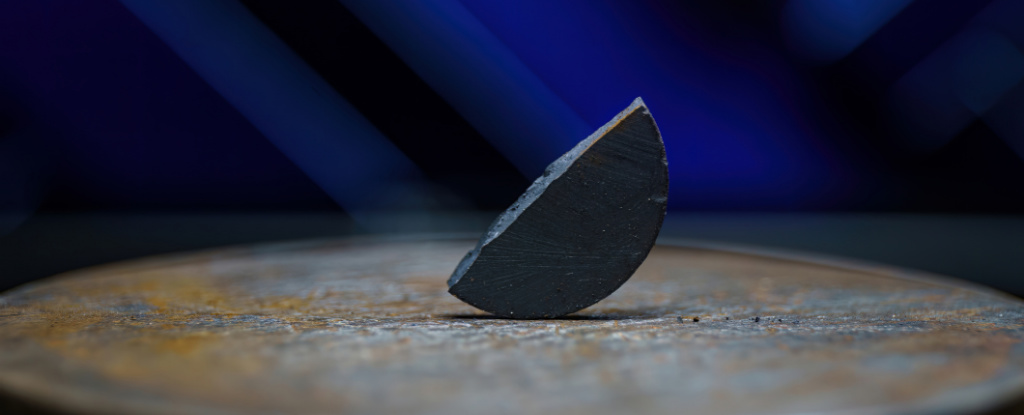Products You May Like
Ever since the spooky phenomenon of superconductivity was discovered in 1911, scientists have been searching for superconducting materials that work under practical conditions.
If only they could find a compound in which electrical resistance vanishes at room temperature and ambient pressure – not extreme cold and ultrahigh forces – then we could finally step into the world they envisage of ultrafast computer chips, levitating trains, and superefficient energy grids.
For a hot minute, it looked like 2023 was going to be the year where physicists’ pursuits broke through the room-temperature barrier. But those hopes – which were doused in skepticism from the start – were dashed not once, but twice in the space of a few months.
Now, the findings from a team of materials scientists at the Chinese Academy of Sciences (CAS) have been peer-reviewed, putting another nail in the coffin of LK-99, the material a South Korean team claimed in July was a room-temperature superconductor.
If you’ve been following the LK-99 saga, you’ll have been through a rollercoaster of emotions the past few months as scientists scrambled to replicate the South Korean team’s extraordinary claims – and were ultimately left wanting.
LK-99 consists of copper, lead, phosphorus and oxygen, and the South Korean team claimed (in two preprints, neither peer-reviewed) that the electrical resistance of the material dropped sharply as it cooled from a rather toasty 105 °C (378 K).
Near-zero resistance is one of two key properties of superconductivity; the other being the way magnetic fields are expelled from superconducting materials in what’s known as the Meissner effect, causing them to levitate above magnets.
A series of preprints published just weeks after the news of LK-99 first broke brought those claims about LK-99’s purported superconductivity crashing back down to Earth.
One preprint describing LK-99’s chemical structure said that structure made superconductivity infeasible. Other experiments suggested ferromagnetism, not superconductivity, was behind LK-99’s off-kilter, partial levitation.
A third preprint, from Shilin Zhu and colleagues at the CAS Institute of Physics, suggested LK-99’s purported superconductive properties were actually due to impurities in the material – in particular, copper(I) sulfide. That study has now been peer-reviewed, adding weight to its conclusions.
“A surge in misleading information about LK- 99 call[ed] for urgent clarification of its superconductivity,” the researchers write.
To recap, Zhu and colleagues synthesized two kinds of LK-99 with different copper(I) sulfide (Cu2S) content and investigated the samples’ material properties.
Firstly, they showed the electrical resistance of Cu2S alone plummeted around 112 °C (385 K) and they saw a similar effect in LK-99 samples with lots of copper sulfide impurities.
That ‘transition’ temperature is not far off 105 °C – the temperature at which the South Korean team reported LK-99’s superconductivity properties emerged.
But Zhu and colleagues argue that LK-99’s superconductor-like properties most likely originate from the Cu2S, which morphs from a hexagonal structure to a monoclinic one near 126 °C (400 K). Their impure LK-99 samples also didn’t show zero resistivity like a true superconductor would.
This “strongly suggests that the superconductivity-like behavior in LK-99 reported by Lee et al. is caused by the structural phase transition of the impurity Cu2S” the researchers write.
Soon after Zhu and colleagues shared these findings as a preprint in August, other researchers not involved in the work told Nature they thought things were “pretty decisively settled” and LK-99 was not a room-temperature superconductor.
Now that Zhu and colleagues’ findings have passed peer review, it would seem more researchers agree.
The study has been published in Matter.
